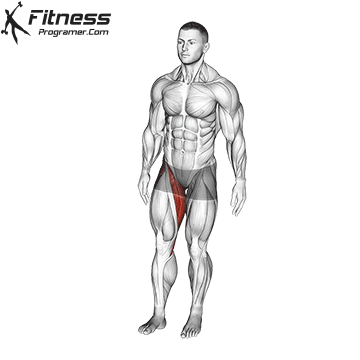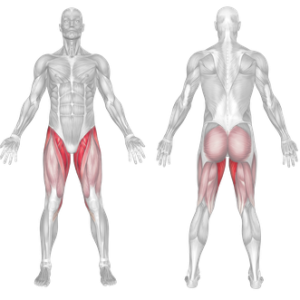Overview
Standing leg circles are a simple yet effective lower body exercise that helps improve leg strength, hip mobility, flexibility, and balance. It involves standing on one leg while making circular motions with the other leg.
The leg circles involve dynamic stretching, which means that you’re not only elongating the muscles but also working on their functional capacity. This exercise is often used in various fitness routines such as yoga and pilates, as well as in pre-workout warm-up routines.
How to perform Standing Leg Circles

Stand tall with your feet shoulder-width apart and your hands on your hips or extended out for balance.
Shift your weight to one leg and lift the opposite foot slightly off the floor.
Draw small circles in the air with the lifted leg, moving it forward, outward, then backward in a slow, controlled motion.
Perform 8 to 10 circles in one direction, then reverse the direction.
Switch legs and repeat.
Tips for Proper Form
Keep your upper body upright and avoid leaning.
Engage your core to stay balanced and stable.
Use slow, controlled movement rather than momentum.
Start with small circles and gradually increase range.
Use a wall or chair for support if needed, especially for beginners.
Common Mistakes
Swinging the leg instead of controlling the motion.
Leaning excessively to one side, reducing balance benefits.
Rushing the movement, which reduces muscle engagement.
Forgetting to reverse direction, leading to imbalanced development.
Not keeping the standing leg engaged, missing out on stability training.
Benefits of the Standing Leg Circles
Improves hip mobility: The circular motion increases range of motion around the hip joint and reduces stiffness.
Strengthens stabilizer muscles: The standing leg works to keep you balanced, strengthening glutes, calves, and ankle stabilizers.
- Inner Thigh Activation: The inner thigh muscles (adductors) are involved in controlling the leg’s movement during the circles. Strengthening these muscles can improve your leg stability and control.
Enhances neuromuscular coordination: This movement builds body awareness and balance, key for athletic and daily movement.
Great for warm-ups and mobility: It preps the joints and muscles for more intense exercise or helps maintain mobility on recovery days.
Low-impact and joint-friendly: Ideal for those with limited mobility or recovering from injury, offering strength without strain.
Supports better posture: Engaging the core and glutes during the movement reinforces upright posture and spinal alignment.
Improves functional movement: Helps with daily actions like stepping, rotating, and shifting weight efficiently.
How to Incorporate Into Your Routine
- For Beginners: Perform 2 to 3 sets of 6 to 8 circles in each direction per leg.
- For Strength: Add ankle weights for 2 to 3 sets of 8 to 10 reps per direction with slower tempo.
- For Functional Training: Include in movement prep or as part of multi-directional drills.
- For Circuit Training: Use as a low-impact active recovery exercise between strength sets.
- For General Fitness: Add to your daily mobility or morning movement routine to maintain joint health.
- For Balance and Rehab: Use near a wall or with support to retrain single-leg control and stability.
Muscles Worked
The specific muscles worked during leg circles can vary depending on the direction of the circles (clockwise or counterclockwise) and the leg being moved. Here are the key muscle groups that are typically involved:

Frequently Asked Questions
Is this a good warm-up exercise?
Yes, it helps activate the hips and core while improving blood flow and joint readiness.
Can I do this every day?
Absolutely. It’s low-impact and suitable for daily mobility work.
What if I have poor balance?
Use a chair or wall for support. Balance improves over time with consistent practice.
Does it help with tight hips?
Yes, especially when combined with other dynamic and static hip mobility exercises.
